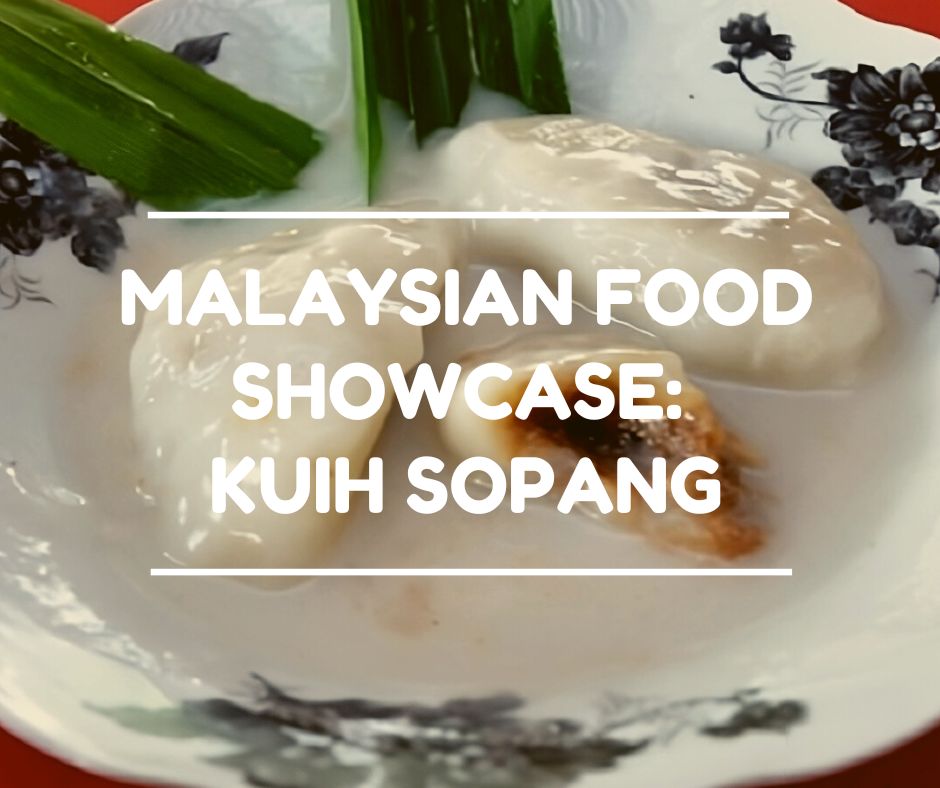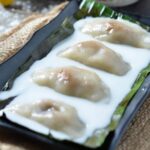Kuih Sopang: The Sweet Chewy Dessert from Negeri Sembilan
Kuih Sopang is a traditional dessert from Negeri Sembilan, especially in the town of Kuala Pilah. It is crafted from ingredients such as flour mixture (usually glutinous rice flour and/or rice flour), coconut milk, gula enau (Negeri Sembilan’s version of palm sugar), and salt, with sweetened grated coconut as the filling. The dish’s history traces back to the local town of Sepang, with its unique name ‘Sopang’ reflecting the regional dialect.
The dough is made by adding the flour with water creating a thick and well-blended mixture. Some cook would add mashed banana or pandan leaf water into the dough mixture to give it an extra depth of flavour. Some would just add food colouring to create Kuih Sopang with a different colour, instead of just the usual white colour.
After the dough is formed, small portions are rolled into balls. The balls are flattened and filled with grated coconut sweetened with gula enau, and then shaped into half moon shape or oval shape. The kuih is then steamed on top of banana leaf with a ladleful of thick coconut gravy. It is steamed at a slow heat to ensure the filling and the outer layer are thoroughly cooked. The colour of the outer layer will also become a visual cue as it changes from opaque to translucent.
Nowadays, Kuih Sopang can be easily found in local kuih shops in Negeri Sembilan. This traditional dessert may vary in appearance from shops to shops but carries a consistent and delightful taste. Some versions of Kuih Sopang are boiled or even fried.
Kuih Sopang is also a celebration dish, specially during Hari Raya. You’ll find it gracing special events, with its presence elevating the festivities. The sticky broth demands a bit of extra care, with handwashing becoming a ritual after comsumption.
While Kuih Sopang has stood the test of time, it faces some challenges among the younger generation. The soupy consistency, perceived inconvenience in serving and eating, and the pace of modern life have somewhat overshadowed its daily consumption. Yet, its unique taste and cultural significance remain undeniable.
Click here to find out more about what to do in Negeri Sembilan.





